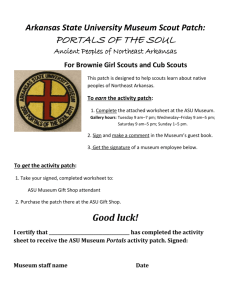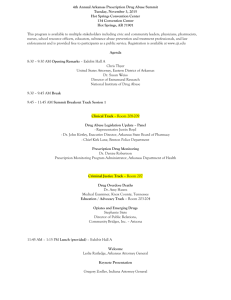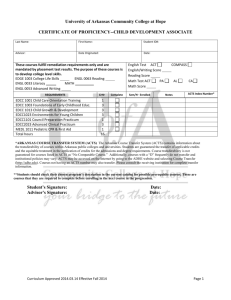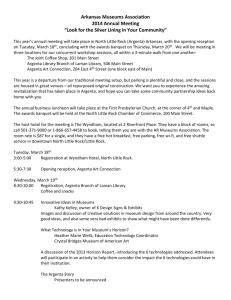the questionnaire for Junior
advertisement
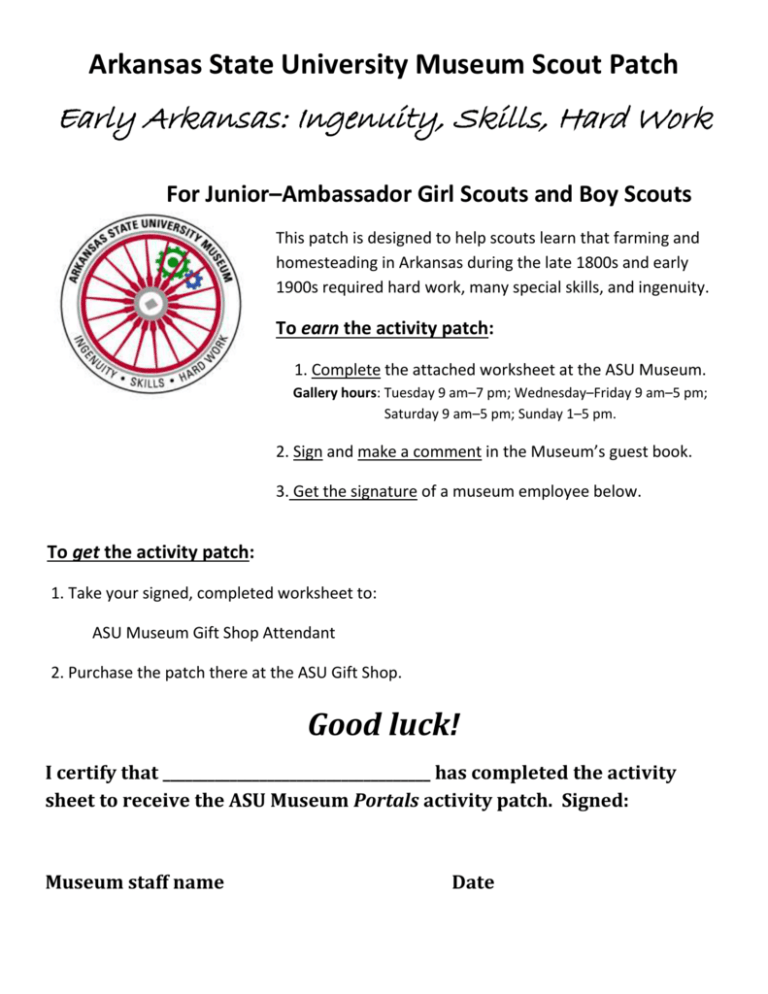
Arkansas State University Museum Scout Patch Early Arkansas: Ingenuity, Skills, Hard Work For Junior–Ambassador Girl Scouts and Boy Scouts This patch is designed to help scouts learn that farming and homesteading in Arkansas during the late 1800s and early 1900s required hard work, many special skills, and ingenuity. To earn the activity patch: 1. Complete the attached worksheet at the ASU Museum. Gallery hours: Tuesday 9 am–7 pm; Wednesday–Friday 9 am–5 pm; Saturday 9 am–5 pm; Sunday 1–5 pm. 2. Sign and make a comment in the Museum’s guest book. 3. Get the signature of a museum employee below. To get the activity patch: 1. Take your signed, completed worksheet to: ASU Museum Gift Shop Attendant 2. Purchase the patch there at the ASU Gift Shop. Good luck! I certify that ____________________________________ has completed the activity sheet to receive the ASU Museum Portals activity patch. Signed: Museum staff name Date Go to the LIVING OFF THE LAND GALLERY Checkerboard Hall 1. Play the checkerboard game using the coordinates (number pairs) as a “map.” Draw and name a shape you made with the gaming pieces: 2. Finish the weaving checkerboard and write coordinates that help someone make the same shape you found above (or some other shape of your choice), this time on the weaving. (___, ___) (___, ___) (___, ___) (___, ___) (___, ___) (___, ___) (___, ___) (___, ___) (___, ___) (___, ___) (___, ___) (___, ___) (___, ___) (___, ___) (___, ___) (___, ___) 3. Graphing and weaving are similar. They both work off an underlying _______ (draw it): Sewing and Household Appliances Exhibit 4. Find the big loom in this exhibit. What would you like to make on it? 5. What appliance did people use to make thread before thread was sold in stores? 6. Name three gadgets found in the household. 7. How would you clean your clothes without electricity? 8. Churning butter by had could take all day long. How many butter churns can you find? Farming Exhibit 9. What kind of crops did farmers in Arkansas plant? 10. Name two animals that pulled plows and provided transportation. 11. What did women wear while outside? 12. How did farmers cook their food while working in the fields? 13. Name two examples of work that women and children did in the fields. Odometer and Wagon Exhibits 14. Go to the big red wagon wheel and find the gears these gears do? behind the spokes. What do 15. Wagon-wheel odometers like this were not used in Arkansas. Why not? 16. Name three other gear-driven machines in this gallery (every exhibit has at least one). Shell and Timber Industry Exhibits 17. Name two reasons people hunted for clams (also called mussels and mollusks). 18. Why do so many clam shells have perfectly round holes in them? 19. Why is it hard to find clams in the rivers and streams of Arkansas today? 20. What was the largest industry in Arkansas around 1900? (Hint: Not farming, because the land was too swampy.) 21. Name two different kinds of saws used for cutting down trees in early Arkansas. Carpentry Exhibit 22. Where did people get iron nails before they were mass produced and sold in stores? 23. When did metal screws become available? 24. Find and draw these measuring tools: Shows a corner is square: Shows a wall is straight: Shows a flat surface is level: 25. How did people in early Arkansas learn how to use tools and become carpenters? 26. Name three tools in the exhibit that people still use today.

